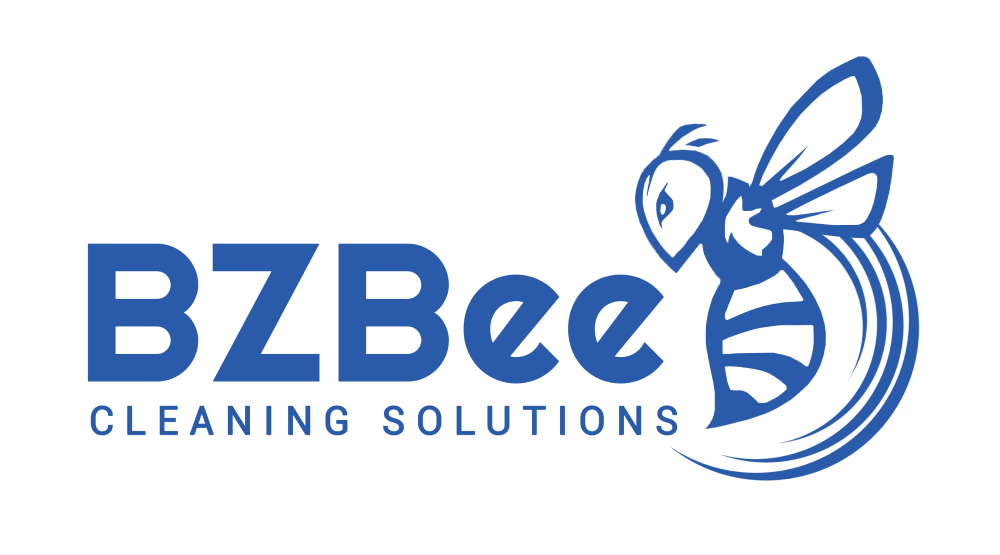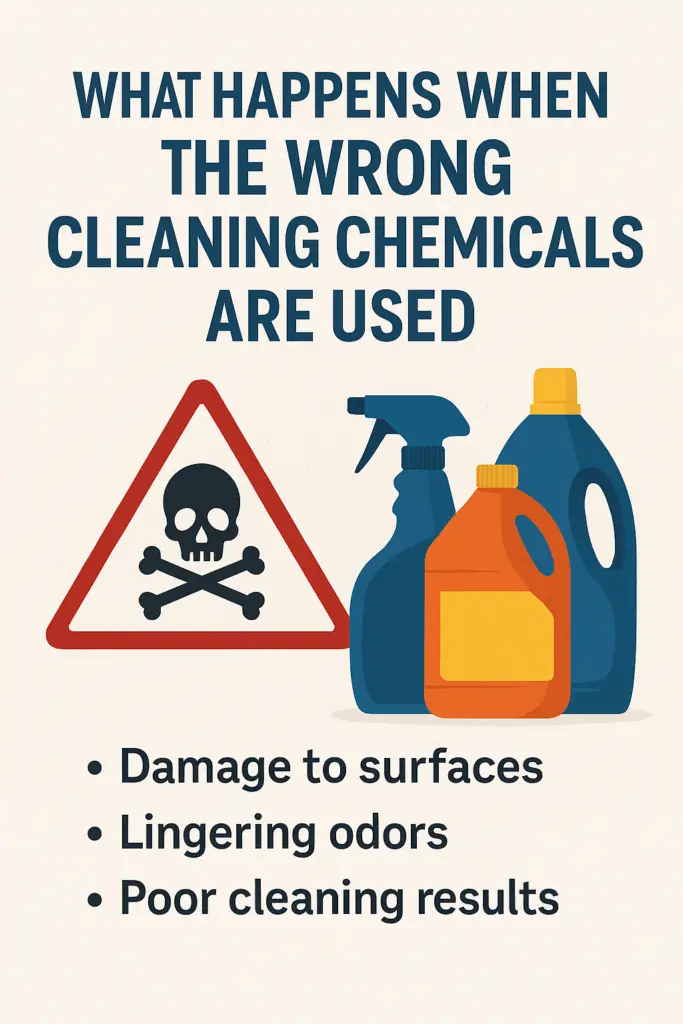(listen to audio)
Most people don’t think twice about the commercial cleaning chemicals being used in their building. If the surface looks clean and smells nice, that’s usually good enough, until it isn’t.
The truth is, using the wrong chemical for the job doesn’t just reduce cleaning effectiveness. It can leave behind residues, damage surfaces, and create long-term problems that show up slowly over time. This is one of the biggest gaps between professional cleaning results and what you get with a low-cost or do-it-yourself setup.
Not All Commercial Cleaning Chemicals Are Created Equal
Walk into any department store and you’ll see rows of brightly labeled cleaning sprays, wipes, and floor products. They’re marketed for convenience and smell, not performance. Most of them are too weak to sanitize properly or too harsh for the surfaces they’re used on.
These off-the-shelf products aren’t designed for professional cleaning environments. They often leave residues that attract more dirt, create sticky floors, or give off strong fragrances that mask odors without addressing the source.
They may work in a home environment, but in a business setting where quality, safety, and durability matter, they’re the wrong tool for the job.
The Wrong Chemical Can Cause Real Damage
Using the wrong product isn’t just ineffective. It can actually make things worse.
- Floors: Some cleaners leave a film or cause streaking that makes floors look dull and dirty, even right after mopping.
- Bathrooms: Using the wrong disinfectant can result in lingering odors, water spots, or soap scum buildup that gets worse over time.
- Surfaces: Harsh chemicals can degrade finishes, etch countertops, discolor tile, and corrode fixtures.
- Wiping: Some multi-surface cleaners leave behind a sticky or cloudy film, making desks and counters look smudged even when “clean.”
And if a product is too strong for the surface it’s used on, or not rinsed properly, can break down materials, eat away at coatings, or create slip hazards.
Why pH Matters in Cleaning
One of the most overlooked factors in commercial cleaning chemicals is pH.
pH is a measure of how acidic or alkaline a substance is. Many hard surfaces like flooring, stone, or fixtures require pH-neutral solutions to avoid damage. That’s especially true for high-traffic areas where cleaning happens daily.
pH-neutral cleaners are strong enough to remove dirt and grime, but gentle enough to protect the surface. They’re essential for preserving finishes, preventing streaks, and avoiding long-term wear.
When cleaners use high-alkaline degreasers or acidic disinfectants where they shouldn’t, the surface may look fine at first, but it’s slowly being damaged.
It’s Not About the Brand. It’s About the Match.
Proper cleaning isn’t about having dozens of expensive chemicals. It’s about knowing which chemical works best for each surface and each task, and applying it with the right tools and dilution.
Professionals don’t guess. They don’t just grab whatever’s on sale. They’re trained to identify the surface, choose the right solution, and use it safely and effectively.
That level of care shows in the results. No streaks. No buildup.
The Bottom Line: Don’t Let Chemicals Become a Liability
Poor chemical use doesn’t always show up right away. Sometimes the damage isn’t immediate. It shows up weeks or months later as dull floors, corroded hardware, damaged grout, or lingering odors that never seem to go away. That’s why commercial cleaning chemicals matter.
When you work with a professional cleaning partner, you’re not just paying for labor. You’re paying for expertise. That includes using the right products, at the right strength, in the right place, every single time.

